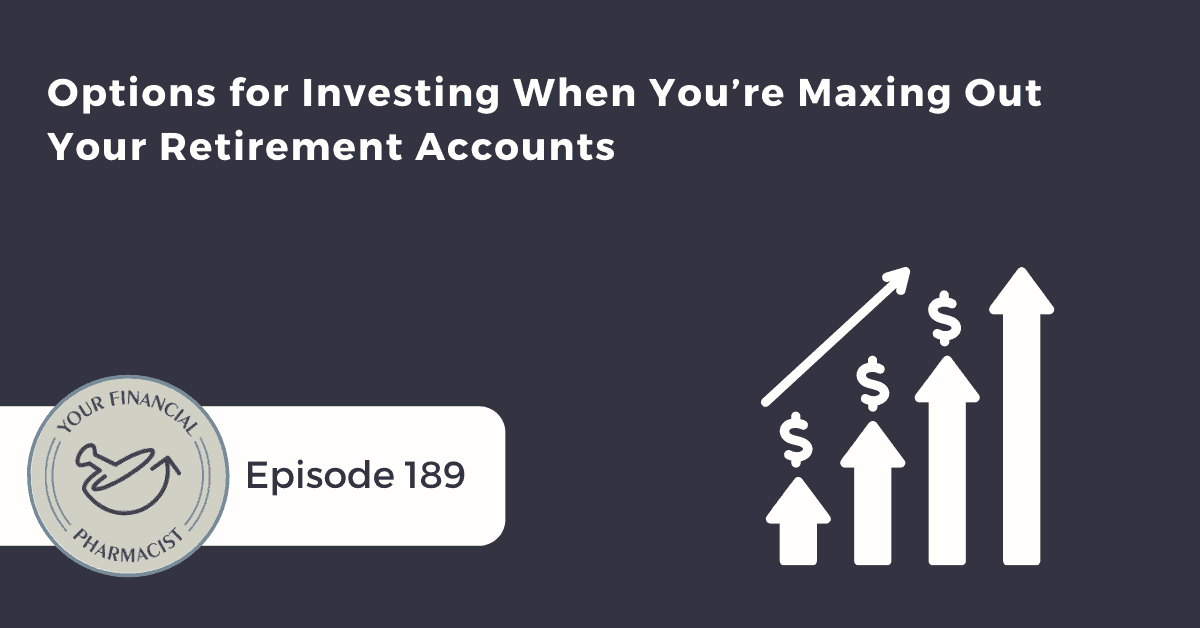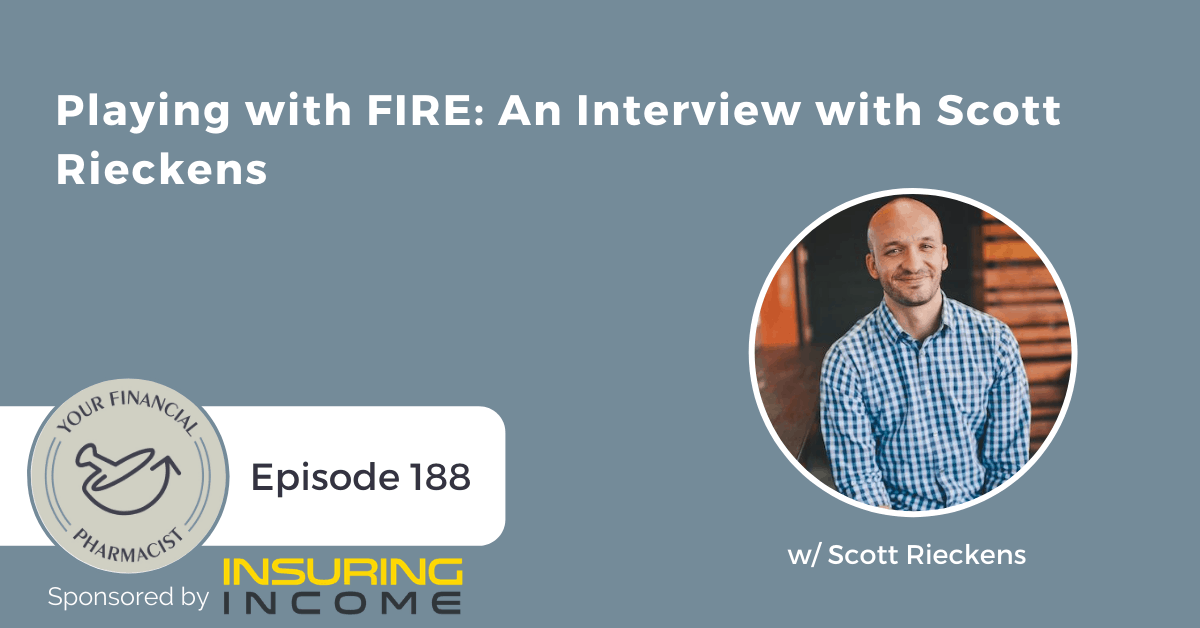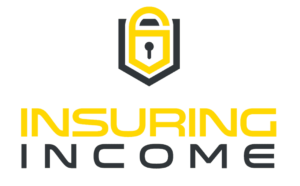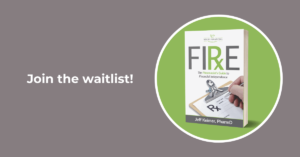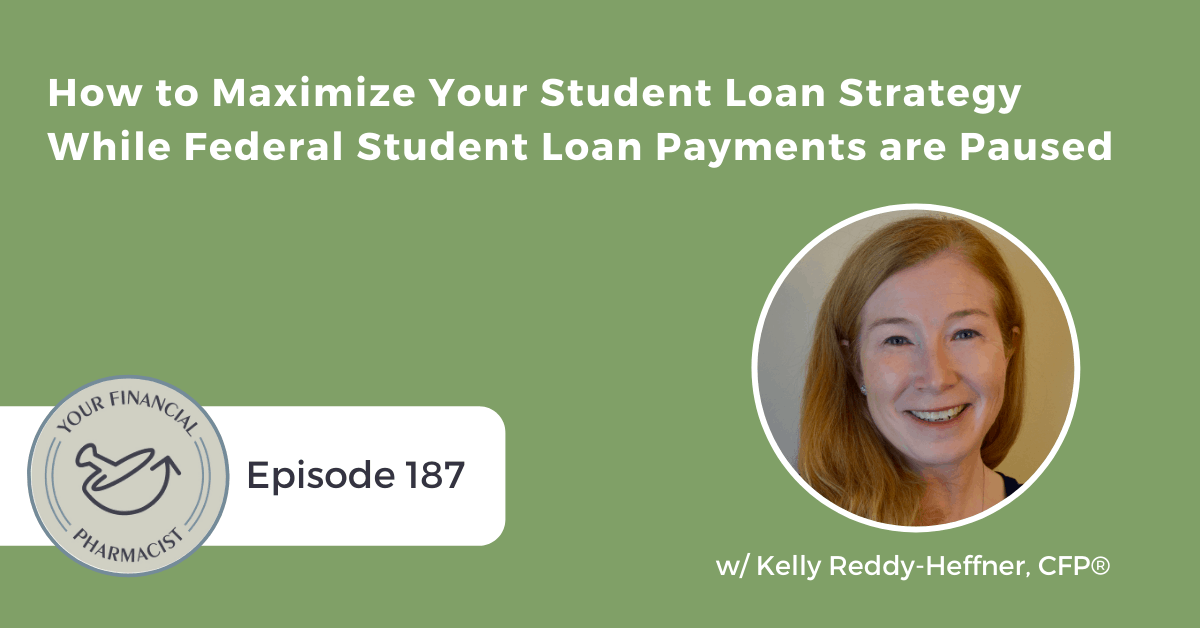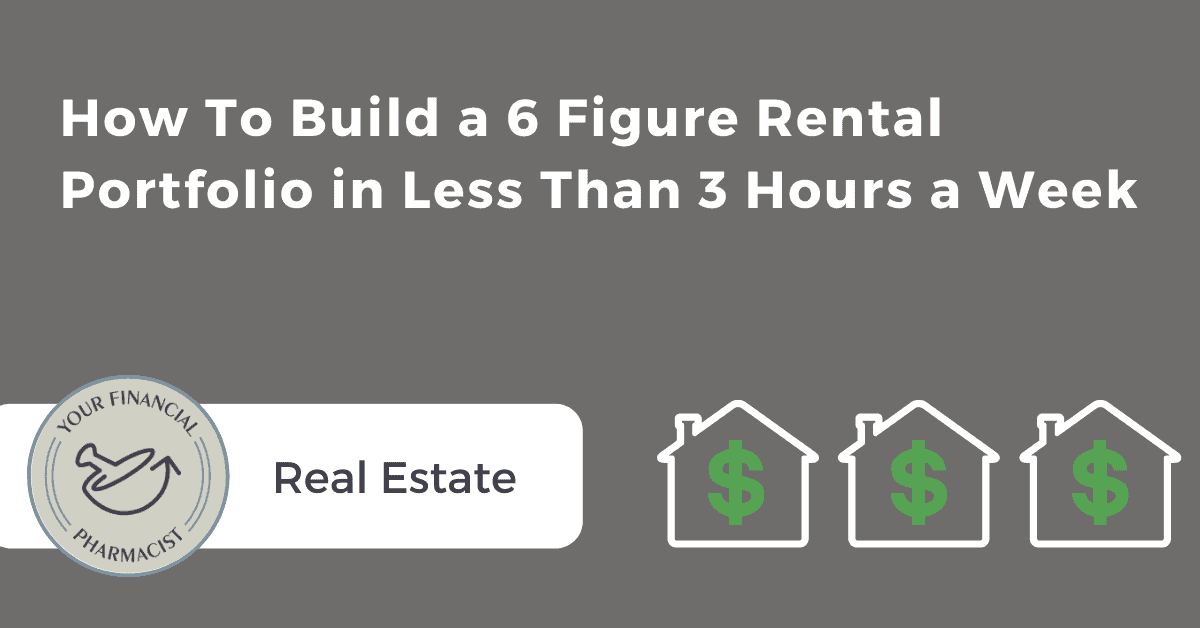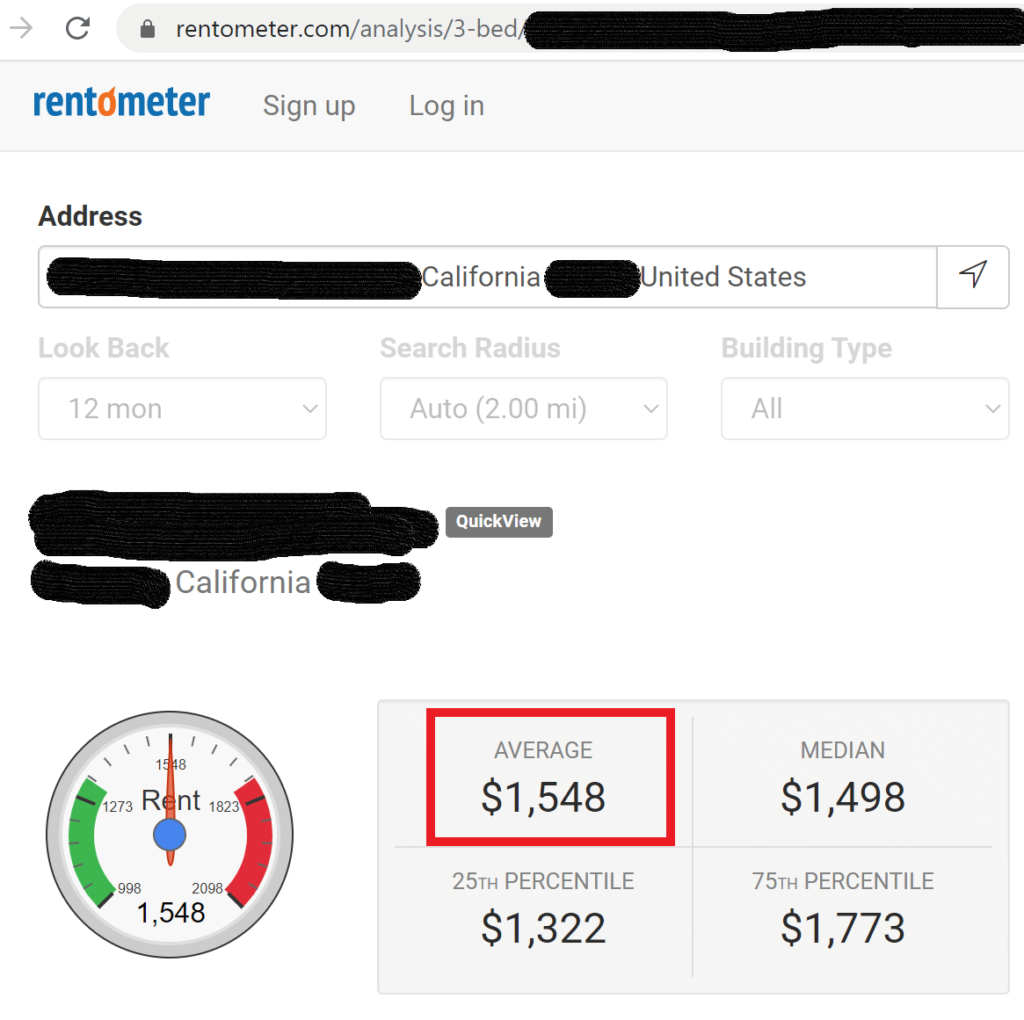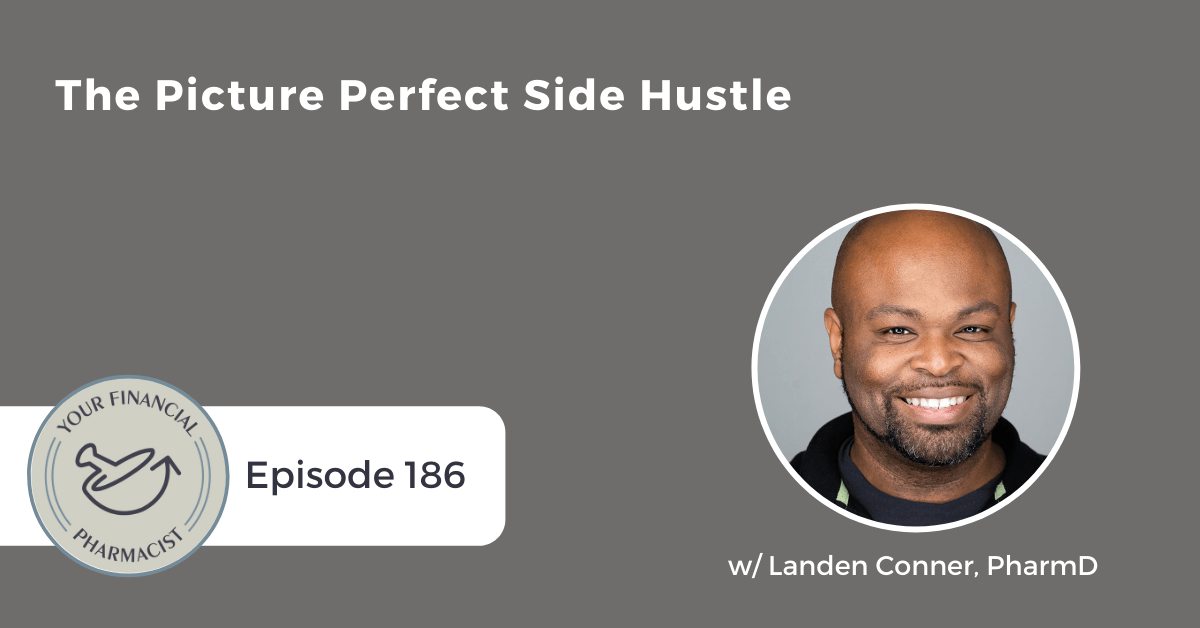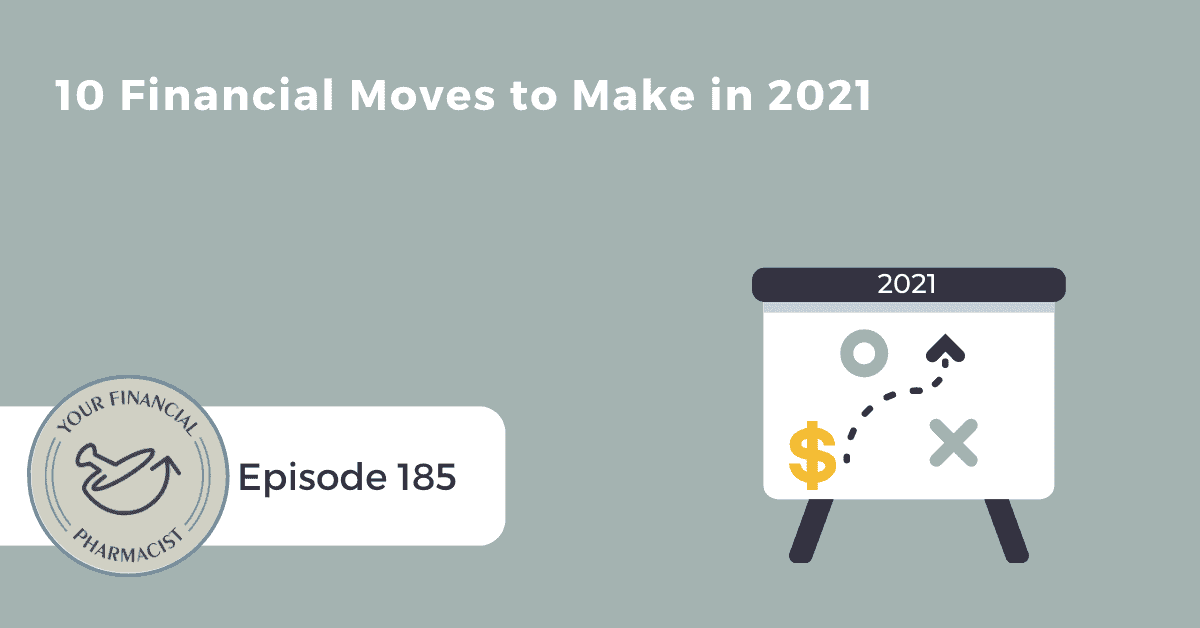Options for Investing When You’re Maxing Out Your Retirement Accounts
On this episode sponsored by LendKey, Tim Baker, Co-Founder and Director of Financial Planning at Your Financial Pharmacist, joins Tim Ulbrich to talk about strategies for investing when you have maxed out your traditional retirement accounts.
Summary
Tim Baker and Tim Ulbrich dive into what traditional retirement accounts are, how contributions have or have not changed, the priority of investing, and strategies for investing when you’ve maxed out your traditional retirement accounts.
Tim Baker explains that traditional retirement accounts are generally any employer sponsored accounts, like 401(k), 403(b), 401(a), or TSP accounts. Traditional IRA, Roth IRA, SEP Ira, and Simple IRA accounts are also considered traditional retirement accounts. Many of these accounts have stayed stagnant in regards to contribution limits from 2020 to 2021, like 401(k) and 403(b) accounts which remain at $19,500. However, IRA accounts have increased to $6,000 (aggregate total for traditional and Roth accounts) and HSA contributions have increased to $3,600 (single) and $7,200 (family) with a catch up of $1,000 for those over 55.
Tim suggests a few areas of investing to consider after maxing out traditional retirement accounts. Real estate investing is a viable way to build wealth as it often provides flexibility and cash flow, can generate both short and long term gains, and comes with a lot of tax benefits. Of course there are risks involved with real estate investing and it isn’t as passive as a traditional retirement account, but can be a way to help grow your income and net worth. Starting or investing in a business is another avenue to take after maxing out your retirement accounts. This could be in the form of starting a side hustle or business, inheriting or becoming part of a family business, or investing in a partnership. Lastly, taxable brokerage accounts like Robinhood or Acorns are a good stepping stone to get into a different type of investing, however Tim suggests being intentional with what your setting brokerage accounts up for. He also shares that the more boring you can be with investments, like investing in the S&P 500 or total market index funds, the better it is.
Mentioned on the Show
- LendKey: Refinance Your Student Loans
- 2021 Key Retirement and Tax Numbers to Know
- YFP 072: Investing Mind Tricks: How Behavioral Bias Affects Our Decisions
- YFP 073: How to Determine the Priority of Investing
- YFP 074: Evaluating Your 401k Plan
- YFP 075: DIY, Robo or Hire a Planner?
- YFP 076: Investing Rapid Fire Q&A
- YFP 163: Investing Beyond the 401k/403b
- YFP Planning: Financial Planning for Pharmacists
- Priority of Investing
- Rich Dad Poor Dad: What the Rich Teach Their Kids About Money That the Poor and Middle Class Do Not! by Robert T. Kiyosaki
- YFP 167: Must Know Real Estate Terminology
- YFP 129: How One Pharmacist Built a 29 Unit Real Estate Portfolio
- YFP 140: How Ryan is Bringing in $11,000 a Month Through College Town Real Estate Investing
- YFP 173: Using Systems to Automate Real Estate Investing
- YFP 178: 5 Lessons Learned from Nate’s First House Flip
- Scott Rieckens
- Playing with FIRE: How Far Would You Go for Financial Freedom by Scott Rieckens
- YFP 188: Playing with FIRE: An Interview with Scott Rieckens
- Book a Free Discovery Call with YFP Planning
Episode Transcript
Tim Ulbrich: Tim Baker, good to have you back on the mic. What’s new?
Tim Baker: Not much. Just settling into our new office, YFP headquarters in downtown Columbus. So that’s coming together slowly with just furniture and everything else. But yeah, just getting comfortable. How about you?
Tim Ulbrich: Yeah, exciting times, I think, for YFP. Excited about having you in Columbus. And we’ve got some exciting things planned for the year, and so here today we’re talking about all options for investing after you’ve maxed out traditional retirement accounts. So first of all, if you are somebody listening that hasn’t maxed out your traditional retirement accounts, kudos to you. That’s not an easy thing to do by any means. And remember, as we say many times on the show, investing is only one part of the financial plan. It can’t be looked at in a silo. And for those that are listening that are at the beginning of the investing journey or looking for a refresher, make sure to check out episodes 072-076, our Investing 101 series, as well as Episode 163, Investing Beyond the 401k, 403b, where we discussed IRAs and HSAs in details. And so we’re going to build upon that information here today. So Tim Baker, let’s back up a bit. What are we talking about when we say traditional retirement accounts?
Tim Baker: I guess the thing that pops into my head first and foremost are going to be what’s provided through the employer. That’s typically things like the 401k, the 403b. A lot of us have supplemental retirement plans, things like the 457, some people have 4018s, which are kind of like 401k’s. And then those that we kind of manage ourselves or through the help of a financial planner, so these are things like traditional IRAs, Roth IRAs. Sometimes we’ll see SEP IRAs for those that are self-employed or work for a small business. And simple IRAs also fall under that. So traditionally, those are the ones that we lean on first when we’re kind of looking at ways to defer income for the purposes of saving for retirement.
Tim Ulbrich: So talking about 2021 numbers here, have contribution limits changed from 2020 as folks are considering, alright, new year, what could I be doing to take advantage of these accounts?
Tim Baker: Some of them have changed, but a lot of them actually stayed stagnant. So the most common, the 401k/403b, is the same. So in 2020, you could put $19,500 per year. And that’s of your own money, so doesn’t matter what the match is that your employer gives you. That’s of your own money. And that’s the same for 2021. So you know, if you take your income, you take $19,500 and divide it by your income, that’s the max percentage that you could put in throughout the course of that year. So what I always say to clients that — particularly those that are starting out and maybe they have a little 401k inertia, which is hey, I put 3% and my employer matched 3%, and then they get stuck there. Years later, they’re 5-10 years into their career and they’re still there, that’s typically not going to be enough. So I kind of like the idea of planting the seed of a race to 10% or a race to double digits. And again, that’s kind of just a rule of thumb. Now, in the IRA world, the contribution limits are also the same. So you can put up to $6,000 per year, if you’re thinking about this monthly, $500 a month, into a traditional and/or Roth IRA. So that’s an aggregate number. So if I put $1,000 into my traditional, I can put $5,000 into my Roth IRA. And then probably the other one that I would call out that actually did creep up a bit is the HSA, the Health Savings Account, which is the one that we always talk about that has the triple tax benefit. So if you’re in a high deductible health plan, you basically qualify for that. If you’re an individual, you can put up to $3,600 per year. If you’re a family, $7,200. And then if you’re over 55, there’s a catchup of $1,000 per year as well. So those would probably be the ones that I would call out. So again, if you are in that population of people — which I wouldn’t say it’s always a lot of the clients that we’re working with — but if you are in that population of people that are maxing out the 401k, the IRA, the HSA, then this episode, you know, might be for you where you’re like, OK, well where do I go next?
Tim Ulbrich: And as a reminder, we have a new quick reference guide too. You can quickly take a look at 2021 key retirement numbers, including 401k, 403b, traditional IRA, Roth contribution limits, HSA, education tax credit incentives, required minimum distribution, tax rates. So for those number nerds out there, this is for you. YourFinancialPharmacist.com/2021, you can download that sheet. So Tim, that was one of my questions. I talked with a prospective client this morning who was really in this camp of, you know what, I need to full throttle my investing plan. So I’m at a point of or near at a point of maxing out my 401k, yes, I see another $6,000 I can put in an IRA, doesn’t necessarily have access to an HSA, so is at this point of alright, I’m ready to go with the next steps. So how often do you see this among pharmacists and clients of ours? How hard is it for pharmacists to max them out? And for those that aren’t maxing them out, what’s typically holding them back?
Tim Baker: It’s hard. I think, again, it depends on where you are in kind of your career and where you’re at. If you are a more of a new practitioner and you’re saddled with six figures of debt, to put money into a 401k can be a little bit of a tough go, especially if you’re looking at a $2,000 monthly loan payment. Sometimes, that is very much baked into the strategy that we are employing that the money that goes into these pre-tax accounts lowers AGI and potentially maximizes a forgiveness play, or if you’re looking at a I’ve refinanced, I’m trying to get through them quickly, I am paying $2,000, $3,000, $4,000, sometimes just not a lot of money left over to go into these retirement accounts. Now, there are 10% of pharmacists out there — those are the numbers — that don’t have loans, that kind of the world is their oyster. But that doesn’t always necessarily mean that their money is going into retirement accounts. A lot of pharmacists after going through years and years of training, it’s kind of like, alright, I need to treat myself a little bit. And then that can sometimes be hard to get out of as well. So I think the flip side of that is if you are further along in your career — so the answer, you know, one of the questions is like, is it a big deal that I’m not maxing these out? And I’m like, it depends. If you’re 35 and you’re trying to retire by 50, maybe it is a big deal. If you’re 45 or 50 and you’re trying to retire by 60, maybe it is a big deal. So I think it’s a little bit of, again, looking at the math and how you feel about what your retirement prospects look like and then marrying those two up. But I think if you are in early in your career and you’re maxing these out, it’s just such an easier lift because in the investments, it’s not about timing the market, it’s about time in the market. And if you can get your money working and have that work for 3-4 decades, that money, you know, is just going to go that much further rather if you wait a decade or two out before retirement. So typically, the earlier that you do it, just the easier that number is that you need to be setting aside per month versus waiting. And that’s really what we’re talking about here.
Tim Ulbrich: And I’m going to give a disclaimer here, Tim, before I ask my next question that none of what we’re talking about here is obviously individual investment advice. And for the reason you just mentioned there, it does very much depend on one’s personal situation. And it’s becoming the running joke of, “it depends,” on this podcast. But it’s so true and speaks to the value of one-on-one, customized planning. So my question is, you know, let’s say someone is investing in their 401k/403b or employer-sponsored plan, should they focus on maxing that out first? And really, what I’m getting here is what’s the order of priority when it comes to investing and how do we think through determining this order?
Tim Baker: Yeah, so if we kind of can figure out like how to navigate the multiple competing priorities — and obviously, we talked about like student debt, you know, we didn’t really focus on consumer debt, which we have a lot of pharmacists that come to us that are — we recently started working with a pharmacist, and their biggest pain point was about $50,000 in consumer and personal debt. So — and rightfully so. That’s the one that’s probably the most debilitating. If we can work through the other competing priorities like other pieces of debt and the life events that are — whether it’s marriage, buying a house, having kids, going on vacation, caring for elder parents, you know, saving for kids’ educations, and all that stuff, then really, the baseline I think priority that we typically look at — and I would probably say for Step 1, everything else aside, unless you have really terrible credit card debt, at a minimum I think everyone that has a match available to them from their employer, they should capitalize on that. So you know, the old adage is like, take advantage of the free money. So one of the things I’ll humble brag is like YFP, we have a Safe Harbor 401k that if our employees put in 5%, we match 4%. And I want to make sure that everyone’s taking advantage of that because it is free money. So to me, for the most part, everyone should do that. From there, you know, if there is an HSA on the table due to a high-deductible plan, I’d probably say that would probably be the second bucket to look at because it has a lot of versatility in terms of what you can use it for. You can use it for today’s health expenses, tomorrow’s health expenses, and then tomorrow’s like retirement. And with the triple tax benefit, if you can shelter $3,600-$7,200 per year for the next x amount of years, that’s a great benefit. And then from there, what we typically say is look outside of the 401k and look at things like IRAs, whether that’s a Roth IRA or a traditional IRA. The reason for that is typically, a lot of 401k’s are strapped with administrative fees and/or there’s not a lot of investment options. But it’s more tied to the fees. So if you can establish an IRA and keep costs low, I think that’s a big win. We believe that the expense related to investments is going to be one of the bigger drivers in making sure that you have an efficient portfolio. So if we can do that in an IRA — and to go back to that, a lot of 401k’s are not created equal. So you have some great 401k’s and 403b’s that are absolutely efficient and fantastic, and then you have those that are not. And it can be a very, very wide range. We’re talking about, you know, very wide differences between great and not-so-great. Typically, though, once you max out the IRA, what you want to do is go back to the 401k and max that out. So that’s that $19,500. So again, you calculate that by $19,500 divided by your — or your income divided by the $19,500 — and that’s the percentage that you use. And then finally — and this can probably work concurrently in some ways — you know, if you do have access to other retirement plans or SEP IRAs if you have a side business or things like that, that might be another good way to go. And then from there, from a traditional sense, you know, a lot of financial planners will just point you to a brokerage account. So those individuals that have like a Robinhood account or an Acorns account, where they typically do that Step 1 or Step 2, you know, in most instances, it’s better to kind of make sure that you’re doing all these other things first. But it could be a brokerage account, it could be where you get into real estate investing. It could be where you are buying into a business or starting a business, things like that. But that’s kind of a general rule of thumb for most investors on how to tackle the priority.
Tim Ulbrich: Great stuff, Tim. And we will link in the show notes, we have an investing priority document. We’ve talked about it previously on the podcast as well. I can’t help but mention, you brought Robinhood’s name up before — what a week for Robinhood with the whole Gamestop thing going on this week.
Tim Baker: Yeah, I know, right?
Tim Ulbrich: Pretty crazy times. But I think brokerage accounts are getting a lot of attention this week. So we’ve established some of these more traditional accounts, 401k’s or 403b’s, or for those that are working in the federal government, of course the TSP, you mentioned the HSA, the IRAs, going back to the 401k or 403b or equivalent, perhaps a SEP IRA. And then we got to this, you know, what’s next, right? And so of course, often the advice is a brokerage account. But you mentioned several other things that might be in the mix, so perhaps real estate investing, of course, the brokerage account, investing in a business — I know I often hear something like insurance type of investments may come up. So let’s break these down a little bit further. First off, real estate investing. This is something we talked about a lot in 2020 and are excited to dig into this topic even more in 2021 as we’ve heard from many of you that are interested in learning more about real estate investing, whether that’s hearing some of this for the first time, whether that’s investing in building the portfolio that you already have, or perhaps for some of you, hearing and saying, you know what, it’s not a good fit for me. And obviously, we try to bring both sides of this, of sharing stories of folks that have been successful but also appropriately bringing in the risks that can come here as well. So Tim Baker, from your perspective, I know you personally have an investment property, I know this is something that has come up with clients, something we’re talking more and more about with clients, tell us at a high level why real estate investing, from your perspective, can be something at least worth evaluating for folks out that are maxing out these accounts?
Tim Baker: Yeah, so I think, you know, if we step back and we kind of think about like traditional financial planners, I think, you know, what I typically hear is from a financial planner, like ah, like do you really want to do that? Because do you want to unclog toilets at 2 in the morning? And the answer is no, nobody wants to do that. But I think the sentiment is really rooted in how the advisor gets paid in a lot of ways. So traditional financial planners are really going to get compensated by you, the client, having as much money in your traditional investments, whether that’s an IRA or a brokerage account or a 401k for you to eventually roll over to them for them to manage. I guess the way that we view this is we view real estate as a viable way to build wealth outside of traditional investments that have both kind of near-term benefits of flexibility and cash flow, you know — for example, when you put your money into a 401k, like wave goodbye to that until you’re at least 59.5, for the most part. So you never really can get access to that where if I buy a property, like I could start cash flowing that and make $100, $200, $300 off of that property the next month. There’s that near term, but then you’re also building, and the asset is appreciating as the note that you’re paying down is depreciated. And then there’s a lot of tax benefits from that in terms of being able to make income but then offset that by the deductions. And there’s a lot of things that’s built into the IRS tax code that reward real estate investors. And I think the other thing that’s flexible is that you could keep that, you know, if you talk about a buy-and-hold strategy, you could keep that for the next 30 years just like you keep a 401k. Or you could say 10 years into it, I want to liquidate this and do something else and basically cash out the equity that you have in the property and go do something completely else, which means you could retire on that. So that is maybe another viable strategy. So because of the flexibility, I think because of the tax benefits that you receive, I think it’s a viable way to build wealth. Now, is it as passive as traditional investment? No. And the more passive it is, the less benefit and flexibility that you’ll get. The more actively managed it is, typically the more flexibility and benefit that you get. But then the tradeoff is that you’re actively managing and it takes time and there’s risk. Well, there’s risk in anything. But I think, Tim, really for those reasons, that’s why we like it. And we think it’s a vi — again, a viable way to build wealth. And at the end of the day, the way that we work with clients is what we’re trying to do is help grow and protect income so you could make an argument that we’re growing income in a real estate portfolio by, you know, we’re cash flowing and we’re protecting it because maybe we’re diversifying that away from a typical pharmacist’s salary. We’re growing and protecting the net worth, which means what we have a collateralized asset with a note that’s appreciating over time, while keeping your goals in mind. So again, if that means early retirement, if that means more of a nontraditional path in terms of the career, I think the real estate aspect creates a lot of opportunity to really fulfill financial independence in the eyes of the pharmacist.
Tim Ulbrich: And I’m so glad, Tim, you mentioned the story and example that’s often used as the objection early on of like, who wants to be a plumber in the middle of the night? And I remember — for those that have read “Rich Dad Poor Dad,” they will be able to resonate with this — but I remember reading that book for the first time, and it was like unlocking like a piece of information that I hadn’t really been exposed to or learned before. And that obviously is a little bit more philosophical in nature, and then you start talking to people who are doing it and learning more about it, and that’s one of the great things about where we are in 2021, I mean, the resources available out there to learn more and to connect with others that are doing it is really, really incredible. But I think being open to learning, you know, perhaps being willing to see what might be the answer to some of those objections is really important. And we’re excited to bring more pharmacist’s stories to this community in 2021 on real estate investing and also connect other pharmacist investors with one another. And I would point folks back to Episode 167, we brought on David Bright to talk about must-know real estate terminology. I think that’s a great place to start. You mentioned, Tim, many of the upsides and benefits, perhaps appreciation, cash flow, tenants paying down a loan, some tax benefits, obviously we’re just scratching the surface here. And obviously, you also presented some of the challenge. You know, it may not necessarily be passive, the quality of tenants may or may not be what you have in mind. I think too there’s a little bit of, you know, I call it HGTV syndrome, Tim, in terms of like, you know, you watch the flipping show and you’re like, yeah, I got it, right? And so I think we’ve all got to take a step back and really make sure we’re not overconfident. But I think for pharmacists, I’m not sure overconfidence is often the risk here. I think it’s probably being too passive and feeling like it’s out-of-reach and not necessarily being willing to take what they may feel is a very significant risk to get started. So we’ve talked about several of these strategies on the episode thus far, you know, obviously there’s the buy-and-hold strategy. In Episode 129, we brought on Aaron Howell, and he discussed how he built a 29-unit portfolio. We brought Ryan Chaw on Episode 140 about how he built his portfolio of college town investing. Episode 173, we brought him back on to talk about his systems, which was a really neat episode to hear how he actually operationalizes this. Obviously that’s one strategy, buy and hold. We’ve talked about flips before, Nate Hedrick, 178, five lessons learned from his flip. And we’re going to continue the conversation. There’s other areas, of course, in wholesaling and forming partnerships, and we’re excited about what’s ahead here. So real estate investing, Tim, is one aspect. Another that pops to mind that is near and dear to our hearts, obviously, with what we’ve been building at YFP is building a business, investing in a business, and this, of course, is a big topic. But at a high level, you know, what types of things do you see from our clients in terms of whether it’s side hustles that they’re starting, businesses that they’re starting or even perhaps looking at investing in other businesses and how they begin to evaluate whether that’s a path forward for them?
Tim Baker: Yeah, so I think what I see most frequently is an interest in a closely-held family business, so like a private company that was inherited from maybe a grandfather or things like that and, you know, the question is like, should I keep this? Like what’s the benefit? And you know, they’re getting K1 every year with maybe a little bit of income that they have to basically declare for the IRS. So it could be like more like that. But then I think that there’s also — I mean, we’ve had clients that have taken their side business, their side hustle, and made it a fully fledged, like a regular business. So it could be just plowing money back into the business itself rather than going into the traditional, but I also have had clients interested in investing in like a partnership, whether it’s like a gym or things like that that, you know, that’s a little bit more of a — there’s a lot of risk there. There’s a lot of, again, what’s your role? What do you bring to the business? Is it money? Is it expertise? Is it planning? Is it clients? And kind of really understanding that. Sometimes, it’s just money. So it’s like, hey, I’m going put money in and let you do your thing, and you’re kind of more of a silent investor. So this can come — just like real estate, this can come in a lot of different flavors. So can investing in a business. Again, one of my favorite shows on TV is “Shark Tank.” So I love watching that and how investors speak with business owners and I’m always interested in business just because I just like to talk small business, in particular, and what makes it work and not work. I think we have a lot of clients that are there. I would say for the most part, the predominant thing that I see is a share of an inherited family business or really, taking this hobby or this side hustle and really forming a fully fledged business and how to really handle that. And a lot of the conversation is, you know, do I take money out of the business? Or do I basically reinvest into the business so I make sure it survives and grows?
Tim Ulbrich: Yeah, and we will continue — one of the areas that I’m very passionate about in the profession of pharmacy is I feel like we are missing some creativity around helping students as well as helping pharmacists just imagine what could be different possibilities or ideas. And I think we do that by sharing stories. Not that they necessarily hear a story of a business or side hustle and say, “I’m going to do exactly that,” but to help them think about another area as an example of something that they’re passionate about in terms of solving a problem, creating a solution to that problem. And so we’ll be bringing more in that area. And you know, I agree. We have to know — you know, everyone knows the stats that most small businesses don’t work. Debbie Downer reality. But I think for those that really do their due diligence, understand what their business is all about, is there a market for it, you know, there certainly is some upsides financially in terms of tax, building equity. One of the things that gets me so excited about business is that there may not be a ceiling. Obviously there can also be a floor.
Tim Baker: Right.
Tim Ulbrich: Or falling through a floor that you have to be aware of and also access to some of the retirement options that we’ve already talked about. So we mentioned, again, in the context of investing beyond maxing out traditional accounts, we’ve talked about real estate, we’ve talked about investing in business. What about probably the most common area here, which is taxable and brokerage accounts? What are some things as you’re working with clients that you’re advising them, getting them to think about, whether it’s choosing where they’re going to be investing that money, how they might keep fees low, how they determine where those investments go? Talk to us about the approach in putting money into a taxable or brokerage account.
Tim Baker: The most common that you see are kind of like the Robinhood, Acorns just because they’re UI and they’re use is so clean and easy. And I think for a lot of people that are curious about investing, it’s a first way — you know, kind of the first way to kind of wade in and see, OK, I want to buy this stock, etc. Typically, we talk about the priority of investing, you know, we just started working with a client that had, again, $20,000 in credit card debt but then they have a $10,000 like Robinhood account. And I’m like, those probably don’t make sense. So I think like with brokerage accounts, what I am a big fan of seeing with savings is like what is this account actually for? So a lot of the uses that we see for brokerage accounts are a tax bomb. So those that are taking non-PSLF forgiveness, you know, they need to cover that tax bill. So they’re putting money into a brokerage account because they’re going to need to access it before 59.5 years old, so they can’t put it into their retirement account, and they need to be able to pay off that tax bill when the loan is forgiven. The other one is, again, when we max everything out, that’s a good use for it. So what I typically urge clients to do, though — and it really directs how we’re going to allocate that particular account — is what is it for? So if you’re trying to retire at 50, all of these traditional accounts that we’ve talked about, for the most part — and there’s some exceptions of what you can do, but you can’t really access them without a penalty until you’re 59.5 years old. So that means you have 10 years, 9.5 years where you have to figure something out. And usually, that figure something out is having a robust brokerage account or maybe liquidating part of a real estate portfolio to be able to cover those first 10 years of retirement. I think the big thing here is if you have an IRA, I probably would just have your brokerage account there. And I’m not down on any of these other apps or things like that, but I think for ease of use — and again, not every custodian is equal; there’s going to be different fees and things like that. So you want to be mindful of that. But I know the sexy and the exciting thing to do is to pick individual stocks, whether it’s Tesla or Gamestop or Ford or whatever it is. But I think, you know — and again, not investment advice — but I think the more boring that you are with your investments, typically the better it is because the sexier and the, you know, the investment strategy is, typically the more speculative and the more expensive it is to the investor. So it could be as easy as putting it into an S&P 500 index or a total market index or things like that and call it a day. So there are some advisors that are colleagues of mine, they hear me talk about real estate investing and all of these other things, and I’ll say like, “Hey, this is the reason I believe that a lot of traditional advisors don’t say it is because it’s a function of income.” And sometimes, it’s — and I get a little pushback on that because I’m kind of criticizing my brethren, but it also could just be it’s a ‘Keep It Simple, Stupid’ approach, which I think for finances, it can go a long way. So you know, there is absolutely nothing wrong — I know we’re talking about small businesses and real estate — there is absolutely nothing wrong with having a 401k, an IRA, and a brokerage account and doing a damn good job of building wealth and living an intentional, wealthy life with those tools.
Tim Ulbrich: Yeah, and I think to that point, Tim, like I would encourage our community, like lean into what you’re comfortable on. You know, I think sometimes there’s some FOMO of like, you know, oh, so-and-so is doing real estate investing or so-and-so owns their own business, and it’s cool and flashy, which you usually don’t see the other side of it all the time. But maybe that is a fit, maybe it’s not. But you know, learn about them, understand them, understand your risk tolerance — and maybe for many folks, it’s really leaning into maxing out traditional accounts, maybe opening some brokerage accounts. But perhaps those other things aren’t a good fit. And I agree with you, I’m seeing more and more pharmacists that seem to be interested in financial independence, early retirement, some combination of those, whether they love their job or maybe not. And I think this is where these tools, the brokerage account specifically, come into play. And last week, we interviewed Scott Rieckens, author of “Playing with FIRE,” Episode 188 for those that are interested in learning more about Financial Independence Retire Early. Tim Baker, great stuff. I think this really highlights for me, again, we’re only talking about here investing, one part of the financial plan. But within the investing bucket, we’ve talked about several different things that of course are traditional accounts and all of the nuances there and then beyond that, lots of decisions to be made, priorities to be balanced, and evaluations to be done. And I think this is a great opportunity to promote and shoutout our financial planning team and our lead planners that work directly with clients one-on-one to have these types of conversations, to look at what are the opportunities, what’s the goal, what’s the purpose, what’s the priority, and then ultimately, how do we put a plan in place to make sure that we achieve it over time? So for those that are interested in learning more about the comprehensive financial planning services we offer at YFP Planning, head on over to YFPPlanning.com. You can schedule a free discovery call, and we’d love to talk with you to see if our services are a good fit for what you’re looking for. And as always, if you liked what you heard on this week’s episode of the Your Financial Pharmacist podcast, please leave us a rating and review on Apple podcasts or wherever you listen to the show each and every week. That’s going to help others find what we’re doing here over at YFP. Have a great rest of your week.
Current Student Loan Refinance Offers
[wptb id="15454" not found ]Recent Posts
[pt_view id=”f651872qnv”]

